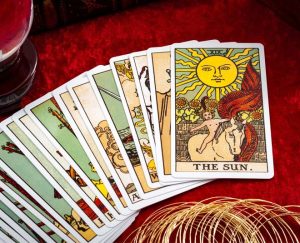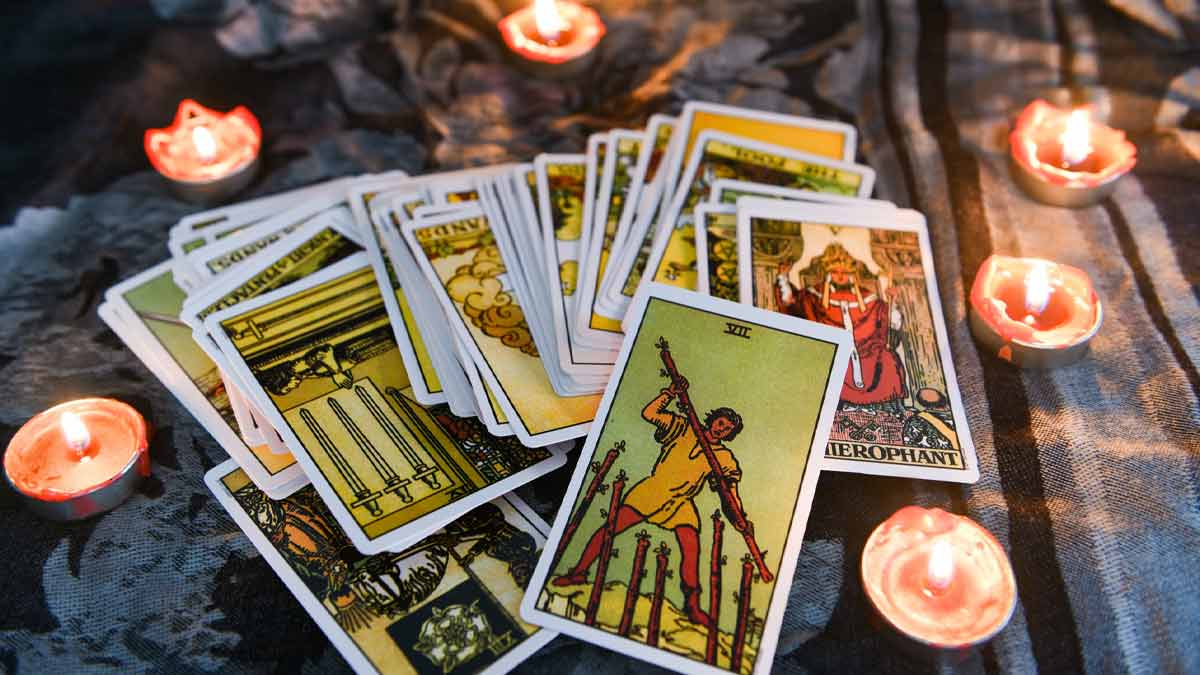The tarot (/taero/, originally known as trionfi and subsequently as tarocchi or tarocks) is a deck of playing cards that has been used in different regions of Europe from at least the mid-15th century to play card games like Italian Tarocchini. From their Italian origins, tarot cards expanded over much of Europe, developing into a family of games that includes more modern games like French Tarot and Austrian Königrufen, which are being played today, as well as German Grosstarok. Custom decks for use in tarot card reading and cartomancy emerged in the late 18th century as a result of French occultists’ complex but unsupported assertions about their origins and significance. As a result, there are two different kinds of tarot packs: those used for divination and those used for playing games. But some older designs, like the Tarot de Marseille, which was created for card games, have also been applied to cartomancy.

Tarot includes four suits, which are similar to playing cards and differ by region: French suits in Northern Europe and Latin suits in Southern Europe. Each suit has 14 cards: four face cards (King, Queen, Knight, and Jack/Knave/Page) and 10 pip cards, numbered from one (or Ace) to ten. The tarot also features a single card known as the Fool and a distinct 21-card trump suit. Fool could play as the top trump or it might be used to avoid doing so depending on the game.
Only specifically created cartomantic tarot cards are easily accessible in English-speaking nations where these games aren’t frequently performed, and they’re mostly employed for amusement and divination. These assertions have been regularly made by writers on card divination since since the early French occultists claimed that tarot cards had esoteric connections to ancient Egypt, Iran, the Kabbalah, Indic Tantra, or the I Ching. However, academic studies have shown that tarot cards were created in northern Italy around the middle of the 15th century and have proven that there is no historical proof of their use before the late 18th century.

The origin of playing cards is uncertain, although they initially arrived in Europe in the late 14th century. The first records, mostly of card games being outlawed, are from Berne in 1367, and they appear to have spread throughout all of Europe quite quickly. Little is known about the design and quantity of these cards; the only significant information is found in a text written in Freiburg im Breisgau in 1377 by John of Rheinfelden, who, in addition to other versions, describes the basic pack as consisting of the four still-in-use suits of 13 cards, with the courts typically being the King, Ober, and Unter (“marshals”), although Dames and Queens were already well-known by that time.
The suits of Batons or Clubs, Coins, Swords, and Cups were one of the earliest card patterns to emerge. These suits are still present in classic decks of playing cards from Italy, Spain, and Portugal, as well as in contemporary (occult) tarot cards that originally emerged in the late 18th century.
Between 1440 and 1450, in Milan, Ferrara, Florence, and Bologna, extra trump cards with allegorical pictures were added to the conventional four-suit pack, resulting in the earliest known tarot decks. The additional cards, known simply as trionfi, later became known as “trumps” in English. These new decks were known as carte da trionfi, triumph cards, and trionfi. The first recorded account of trionfi may be discovered in a 1440 Florence court document referring to the transfer of two decks to Sigismondo Pandolfo Malatesta.







